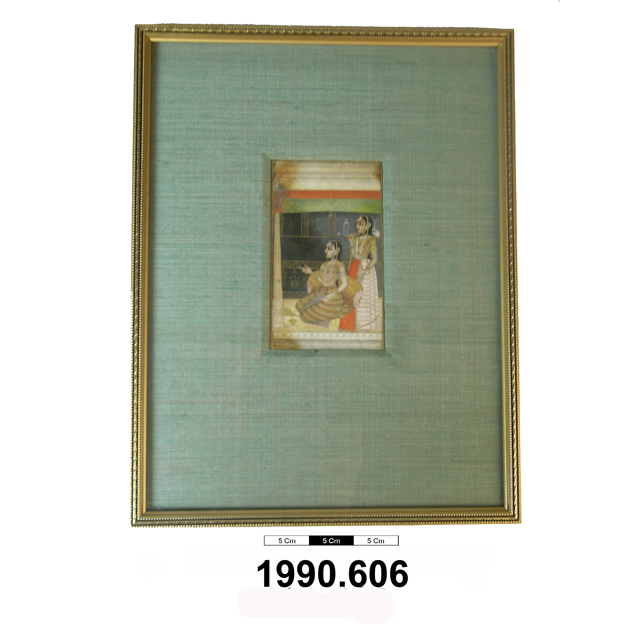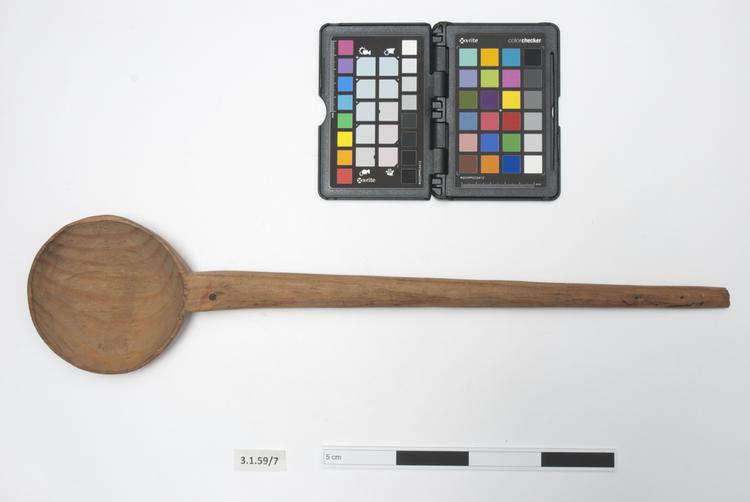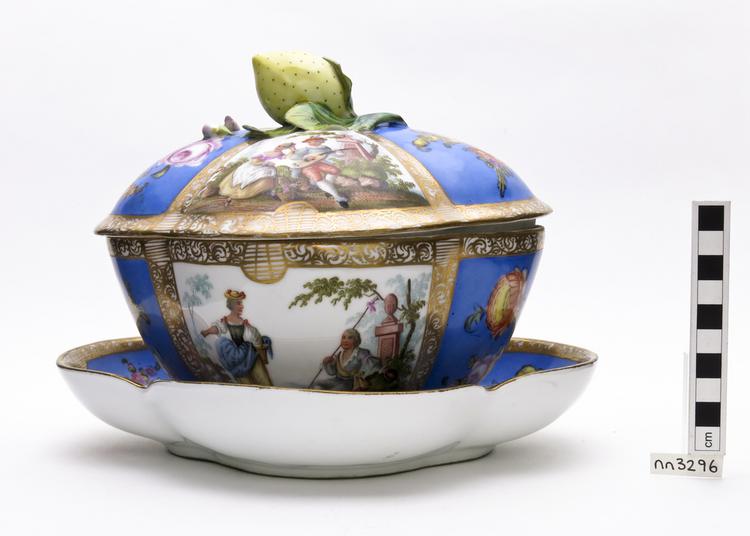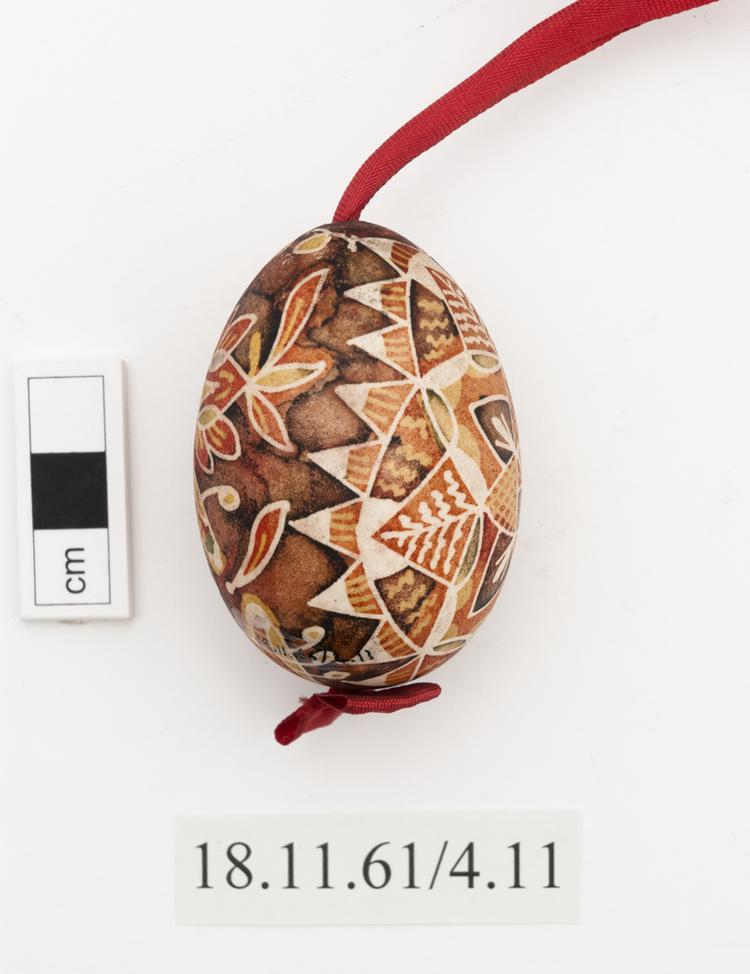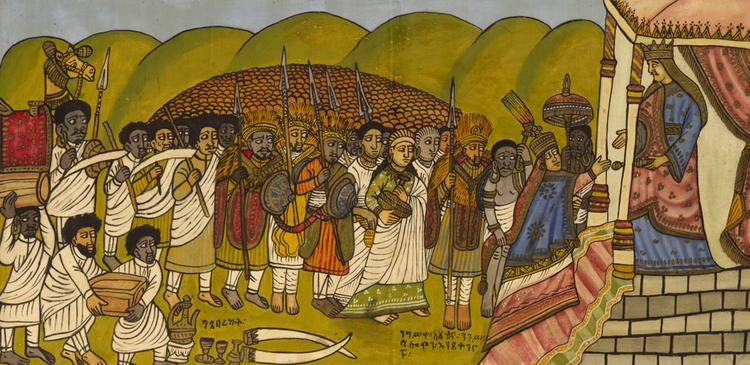
Painting on cotton depicting a scene from the story of King Solomon and Queen Sheba. To the right King Solomon (standing) extends his hand in greeting to Queen Sheba. Around the Queen are her entourage of retainers and servants. The highest ranking men wear colourful silk tunics with embroidered velvet capes, 'lemd', and lion-mane headdresses. They carry ornately decorated shields and long spears. Behind this group is a brownish coloured mound representing a crowd of people. To the far left servants in white 'shamma' lead a camel with an ornate saddlecloth and headstall. In the foreground other servants unload gifts in wooden boxes: a coffee pot, carved ivory tusks, and ghee and perfume containers.
The painting depicts the meeting between King Solomon and Queen Sheba of Ethiopia (also known as Saba or Makeda). The story is central to the ancient Ethiopian book, the 'Kebra Negast' or 'Glory of the Kings'. The book has been described as a repository of Ethiopian national and religious understanding. It is an account written in Ge'ez (the ecclesiastic language of the Ethiopian Orthodox Church) of the origins of the Solomonic line of Ethiopian emperors and explains how the Ark of the Covenant came to Ethiopia. This is understood as historical fact by many Ethiopian Christians and Rastafarians.



